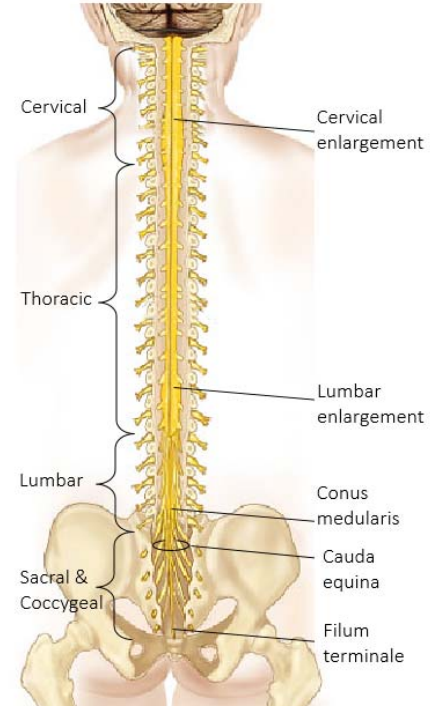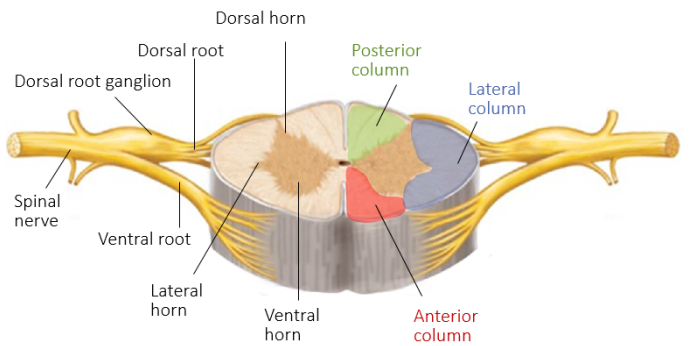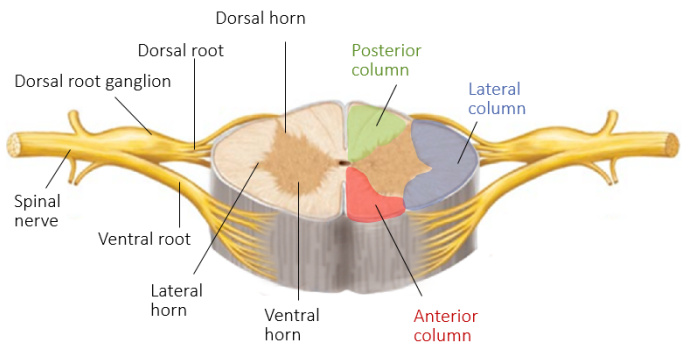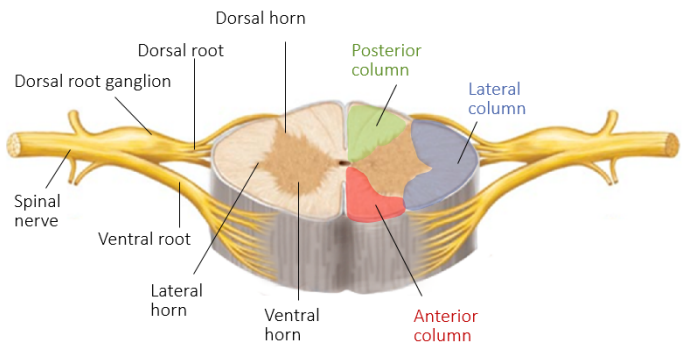U1, L6 A&P232
5.0(1)
Card Sorting
1/23
Study Analytics
Name | Mastery | Learn | Test | Matching | Spaced |
|---|
No study sessions yet.
24 Terms
1
New cards
The spinal cord is a part of CNS enclosed within the vertebral column. It extends from
the foramen magnum to L1
2
New cards
the spinal cord provides
two‐way communication to and from the brain
3
New cards
The spinal cord is protected by
bone, meninges, and CSF.
4
New cards
Cervical and lumbar enlargements are
the sites where the nerves serving the upper and lower limbs emerge
5
New cards
Conus medularis
a terminal portion of the spinal cord.
6
New cards
cauda equina
the collection of nerve roots at the inferior end of the vertebral canal
7
New cards
Filum terminale
* the fibrous extension of the pia mater
* it anchors the spinal cord to the coccyx
* it anchors the spinal cord to the coccyx
8
New cards
The segments of the spinal cord are
* Cervical (neck and arms): 8 pairs of nerves, C1‐8
* Thoracic (arms, upper/mid back): 12 pairs of nerves, T1‐12
* Lumbar (lower back, legs): 5 pairs of nerves, L1‐5
* Sacrum (buttock area, legs): 5 pairs of nerves S1‐5
* Coccygeal nerve: 1 pair
* Thoracic (arms, upper/mid back): 12 pairs of nerves, T1‐12
* Lumbar (lower back, legs): 5 pairs of nerves, L1‐5
* Sacrum (buttock area, legs): 5 pairs of nerves S1‐5
* Coccygeal nerve: 1 pair

9
New cards
A dermatome is the area supplied by the fibers of
the same spinal nerve.
10
New cards
Spinal nerves are part of
the peripheral nervous system, not the CNS.
11
New cards
31 pairs of spinal nerves are attached to the cord by
paired roots
12
New cards
Dorsal roots contain
sensory neurons and ganglia

13
New cards
ventral roots carry
the axons of motor neurons.

14
New cards
Dorsal and ventral roots fuse
laterally to form spinal nerves.

15
New cards
Gray matter in a shape of a butterfly surrounds the small central canal. It consists of
* soma (neuron bodies)
* unmyelinated processes
* neuroglia.
* unmyelinated processes
* neuroglia.
16
New cards
Posterior (dorsal) horns contain
* interneurons that receive sensory input.
17
New cards
Anterior (ventral) horns carry
* interneurons and somatic motor neurons
18
New cards
Lateral horns contain
sympathetic nerve fibers
19
New cards
Four zones are evident within the gray matter:
* somatic sensory (SS)
* visceral sensory (VS)
* visceral motor (VM)
* somatic motor (SM)
* visceral sensory (VS)
* visceral motor (VM)
* somatic motor (SM)
20
New cards
White matter in the spinal cord surrounds the gray matter. It contains fibers (axons) that run in three directions
* ascending
* descending
* transversely
* descending
* transversely
21
New cards
White matter is divided into three columns
* posterior
* lateral
* anterior
* lateral
* anterior
22
New cards
Each column contains several fiber tracts. Fiber tract names reveal
* their origin and destination
* They are composed of axons with similar functions.
* They are composed of axons with similar functions.
23
New cards
The ascending tracts carry impulses
* to the brain
24
New cards
The descending tracts carry impulses
* from the brain.